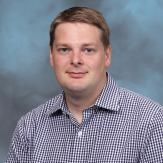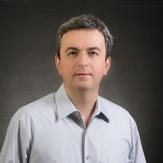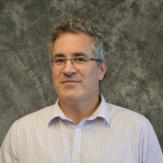Condensed Matter Theory
Sashi Satpathy’s research is focused on a theoretical description of the physical phenomena in solids resulting from the fundamental behavior of the interacting electrons. A variety of computational techniques are employed, principally the Density-Functional Methods, but also the Exact Diagonalization and mean-field methods. Current research problems span a wide variety of research areas including Oxide interfaces, Spin-Orbit coupled system, Jahn-Teller effects, 2D materials including graphene and transition-metal dichalcogenides, RKKY interaction in solids, and spin and orbital Hall effects. Emphasis is put on developing simple models to understand the physics in addition to detail numerical calculations.
Dr. David Singh’s research focusses on understanding the relationships between the structure of materials and their functional properties. He addresses questions such as why is a certain material a good thermoelectric, a high energy product ferromagnet or a high temperature superconductor, while a related compound is not. The goal of this work is to understand properties at the level of atoms and electrons, and to use this understanding to find new higher performance materials for application. The primary tools are computational modeling based on density functional theory, Boltzmann transport theory and molecular dynamics. Singh also develops new approaches and software for this purpose, particularly methods for calculating transport properties and methods for density functional calculations.
Carsten Ullrich’s main area of research is time-dependent density-functional theory (TDDFT). This theory is the generalization of the well-known ground-state density-functional theory (Walter Kohn, Nobel Prize 1998) and allows one to describe the dynamics of interacting electron systems with great accuracy and computational efficiency. He is interested in applying TDDFT to study excitation processes and optical properties of materials and nanostructures, but also in formal aspects of TDDFT such as non-adiabatic behavior and memory effects.
One of Ullrich’s main areas of work is to study excitons, which are a key feature of the optical response in semiconductors and insulators. He and his group have developed new methods to calculate excitonic binding energies from first principles, and to simulate and visualize the formation and motion of excitons in real time. A particular emphasis of this research is on charge-transfer excitations and excitons in organic semiconductors, which form the basis for organic optoelectronic and photovoltaics.
Another direction of Ullrich’s research is on spin-dependent transport and excitations in semiconductors and semiconductor nanostructures. In particular, Ullrich and his group are interested in exploring the interplay between electronic many-body effects, spin-orbit coupling, and various forms of disorder, such as scattering from magnetic or nonmagnetic impurities. They have studied collective spin-plasmon excitations in quantum wells and the infrared optical response in dilute magnetic semiconductors such as (Ga,Mn)As. These materials are of interest as the basis for new device applications in spintronics.
Giovanni Vignale studies the behavior of many-electron systems in strong external fields, confined geometry and/or reduced dimensionality. These systems are usually realized in artificial microstructures, such as quantum wells at the interface of two semiconductors, quantum dots, and multilayers structures, in the presence of strong magnetic fields, and/or time-dependent electromagnetic fields. The focus of Vignale’s research is understanding the effects that arise from the interaction between the electrons . For the theoretical description of interacting electrons he developed a formalism known as “current-density functional theory” (CDFT), which expresses the properties of the electron system in terms of its current density. Vignale’s recent work on time-dependent CDFT shows that the electronic dynamics is equivalent, in the appropriate macroscopic limit, to a generalized hydrodynamics, with visco-elastic coefficients determined from properties of the homogeneous electron gas. This theory has suggested a novel approach to the dynamics of a two-dimensional electron gas (2DEG) in a very strong magnetic field. This theoretical description is consistent with the results of recent tunneling experiments at the edge of the 2 DEG. Vignal and his group have also worked on the problem of “Coulomb drag” and superfluidity in spatially separated, interacting two-dimensional layers containing electrons and holes respectively. A new signature of superfluidity has been proposed, and strategies to facilitate condensation in realistic systems have been devised.
Hydrogen is widely considered an essential part of our energy future as a potential medium for energy storage (its combustion byproduct being merely water vapor), however due to the fact that hydrogen is a gas, the “grand challenge” is the development of a storage system capable of delivering acceptable driving ranges. The problem is that currently we lack a “goldilocks” material—a material that interacts with hydrogen “just right”, either the materials bind hydrogen too strongly (making it hard to remove it from the tank) or too weakly (making it hard to store it).
Carlos Wexler’s group uses a combination of theoretical modeling and computer simulations to investigate “nano-sponges”—materials with pores in the nanometer scale—that are capable of storing hydrogen and natural gas (methane) reversibly by physisorption at moderate pressures. In particular Wexler seeks to understand how the nanopores can be engineered (optimal pore size and geometry, chemical surface functionaliation) to enhance the hydrogen-pore interaction. For example, his group demonstrated theoretically by ab initio calculations and grand canonical Monte Carlo simulations how boron doping of carbon could raise the interaction energies substantially creating a material capable of reaching acceptable storage characteristics at room temperature. Recently,m their experimental collaborators in Prof. Pfeifer’s group confirmed enhanced hydrogen sorption for boron-doped carbon.
Wexler’s group is also working to develop the theoretical foundations of new experimental methods to characterize porous materials, and sometimes even perform some of the experiments. In addition, his group also investigates the curious phases and phase transitions observed in numerous quasi-two dimensional systems such as two-dimensional electron systems (Quantum Hall Effects), spins and spin chains (“Extended Universality”), and organic films deposited on a substrate.
Condensed Matter Theory Faculty
Time-dependent density-functional approaches for electronic…



